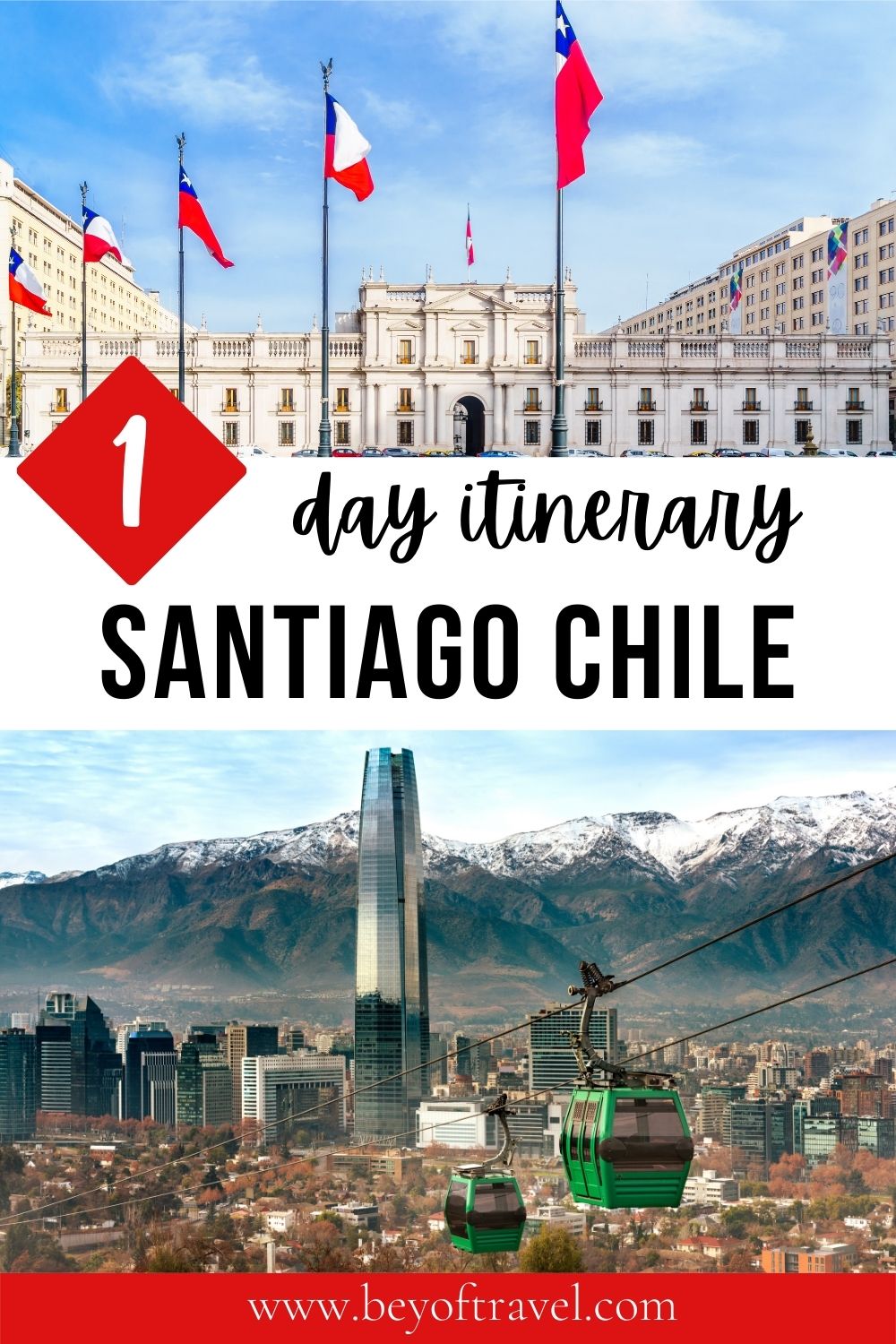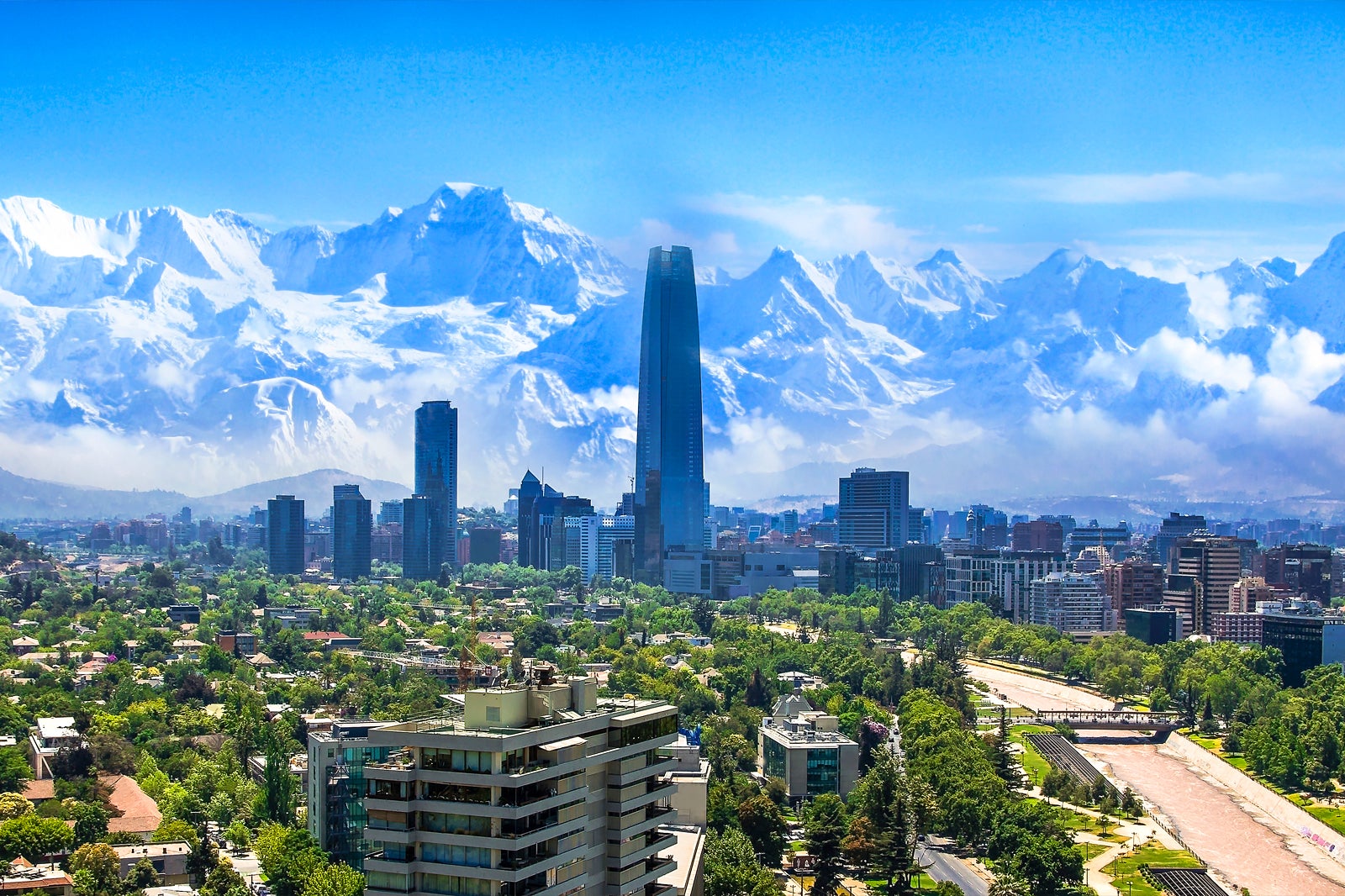
Santiago, the vibrant capital of Chile, is a city that pulsates with an intoxicating blend of colonial charm, modern dynamism, and breathtaking natural beauty. Nestled in a valley cradled by the majestic Andes Mountains, it offers a captivating experience for every traveler, from the history buff to the adventure seeker, the foodie to the art enthusiast. This sprawling metropolis, with its tree-lined avenues, bustling plazas, and a backdrop of snow-capped peaks, is a destination that lingers long after you’ve departed.
This comprehensive guide will equip you with everything you need to know to embark on an unforgettable journey to Santiago, from its rich history and top attractions to practical travel tips, accommodation options, and the best times to experience its magic.
A Glimpse into Santiago’s Storied Past

Related Articles about Santiago: A Symphony of Culture, History, and Adventure in the Heart of Chile:
- Paris: A Timeless Guide to the City of Lights
- Poland’s Grand Stays: Unveiling the Best Hotels Amidst a Tapestry of History and Culture
- Manchester: A City of Grit, Glamour, and Groundbreaking Culture
- Los Angeles: A City of Dreams, Glamour, and Endless Exploration
- O Canada: Your Comprehensive Guide to Exploring the Great White North
Santiago’s story began in 1541 when Spanish conquistador Pedro de Valdivia founded the city on the banks of the Mapocho River. Its strategic location and fertile surroundings quickly made it a significant administrative and economic center for the Spanish Crown. The city witnessed periods of colonial rule, independence struggles, and significant earthquakes that reshaped its urban landscape.
The 19th century marked a period of growth and modernization, with the construction of grand boulevards and neoclassical architecture that still grace the city today. Santiago played a pivotal role in Chile’s fight for independence from Spain, and its plazas and monuments stand as testaments to this revolutionary spirit. The 20th century brought both progress and challenges, including periods of political turmoil. However, Santiago has emerged resilient, a modern South American capital that proudly embraces its heritage while looking firmly towards the future.
Unveiling Santiago’s Top Attractions
Santiago offers a diverse array of attractions, catering to every interest. Here are some of the must-see sights:
-
Plaza de Armas: The historical heart of Santiago, this bustling square is surrounded by significant landmarks. Admire the imposing Metropolitan Cathedral, a stunning example of neo-classical architecture, and explore the Central Post Office and the National Historical Museum. The plaza is always alive with street performers, vendors, and locals enjoying the vibrant atmosphere.
-

Cerro San Cristóbal: Offering panoramic views of the city and the Andes, this iconic hill is a Santiago essential. Take the funicular or hike your way to the summit to admire the Virgin Mary statue, visit the Japanese Garden, and the Santiago Zoo. On a clear day, the vista is simply breathtaking.
-
Barrio Bellavista: This bohemian neighborhood is a riot of color, art, and culture. Wander through its narrow streets lined with brightly painted houses, discover independent art galleries, enjoy live music in intimate bars, and indulge in the diverse culinary scene. It’s also home to La Chascona, one of Pablo Neruda’s houses, now a fascinating museum.
-
Mercado Central (Central Market): A sensory overload in the best possible way, the Mercado Central is a bustling seafood market where you can witness the day’s catch and savor some of the freshest seafood in the city. Enjoy a delicious lunch of ceviche or a hearty caldillo de congrio (conger eel stew) at one of the market’s renowned restaurants.
-
Museo Chileno de Arte Precolombino (Chilean Museum of Pre-Columbian Art): This exceptional museum houses an impressive collection of artifacts from indigenous cultures across the Americas, spanning thousands of years. It provides a profound insight into the rich artistic and cultural heritage of the region.
-
Museo de la Memoria y los Derechos Humanos (Museum of Memory and Human Rights): A somber yet vital institution, this museum documents the human rights abuses that occurred during Chile’s military dictatorship. It’s a powerful and important place for understanding the country’s recent history and its commitment to remembering.
-
Barrio Lastarria: Adjacent to Bellavista, Lastarria offers a more sophisticated bohemian vibe. It’s known for its charming cafes, independent bookstores, boutique shops, and excellent restaurants. The Centro Cultural Gabriela Mistral (GAM) is a modern cultural hub hosting exhibitions, performances, and workshops.
-
Parque Forestal: This beautiful linear park stretches along the Mapocho River, offering a green oasis in the city. It’s a perfect spot for a leisurely stroll, a bike ride, or a picnic, with the Museo Nacional de Bellas Artes (National Museum of Fine Arts) and the Museo de Arte Contemporáneo (Museum of Contemporary Art) located within its grounds.
-
Sky Costanera: For unparalleled, unobstructed views of the entire city and beyond, ascend to the observation deck of the Sky Costanera, located within the Costanera Center, South America’s tallest building.
Essential Travel Tips for Santiago
To ensure a smooth and enjoyable trip, keep these practical tips in mind:
- Language: Spanish is the official language. While many people in tourist areas speak some English, learning a few basic Spanish phrases will be greatly appreciated and enhance your experience.
- Currency: The Chilean Peso (CLP) is the official currency. Credit cards are widely accepted in hotels, restaurants, and larger shops. ATMs are readily available for cash withdrawals.
- Safety: Santiago is generally a safe city, but like any major metropolis, it’s wise to be aware of your surroundings and take precautions against petty theft, especially in crowded areas. Keep valuables secure and avoid displaying expensive items.
- Tipping: Tipping is customary in restaurants (usually 10%), and for services like hotel staff and tour guides.
- Electricity: Chile uses Type L and Type C plugs and a voltage of 220V. Bring an adapter if necessary.
- Water: Tap water in Santiago is generally safe to drink, but many visitors opt for bottled water to be on the safe side.
- Sun Protection: The Chilean sun can be intense, especially at higher altitudes. Always wear sunscreen, a hat, and sunglasses, even on cloudy days.
- Altitude: Santiago is situated at an altitude of about 520 meters (1,700 feet). While most visitors don’t experience significant altitude sickness, it’s good to be aware and stay hydrated.
Accommodation Options in Santiago
Santiago offers a wide range of accommodation to suit every budget and preference:
- Luxury Hotels: For a pampered experience, consider hotels in the upscale neighborhoods of Las Condes or Vitacura. These areas offer world-class amenities, exceptional service, and stunning city or mountain views.
- Boutique Hotels: Explore charming boutique hotels in neighborhoods like Barrio Lastarria or Barrio Bellavista for a more intimate and stylish stay, often with unique architectural designs and personalized service.
- Mid-Range Hotels: You’ll find a plethora of comfortable and well-equipped mid-range hotels throughout the city, particularly in areas like Providencia and near major business districts.
- Hostels: Santiago has a thriving hostel scene, offering budget-friendly dorms and private rooms. These are great for solo travelers and those looking to socialize, often found in vibrant neighborhoods like Bellavista.
- Apartment Rentals (Airbnb, etc.): For longer stays or for families, renting an apartment can be a cost-effective and convenient option, providing more space and the ability to cook your own meals.
Navigating Santiago: Transportation
Getting around Santiago is relatively easy and efficient thanks to its well-developed transportation network:
- Metro: Santiago’s metro system is clean, efficient, and extensive, covering most of the city’s main attractions and neighborhoods. It’s the most convenient and affordable way to travel. Purchase a rechargeable Bip! card for easy access.
- Buses: A comprehensive bus network complements the metro, reaching areas not covered by the subway. However, navigating bus routes can be more challenging for tourists.
- Taxis and Ride-Sharing: Taxis are readily available, but it’s advisable to use official taxis or book them through your hotel. Ride-sharing apps like Uber and Cabify are also popular and a convenient option.
- Walking: Many of Santiago’s most interesting neighborhoods, like Bellavista, Lastarria, and the historic center, are best explored on foot.
- Biking: Santiago has been increasingly investing in bike lanes, and renting a bike is a pleasant way to see the city, especially along the Mapocho River.
The Best Time to Visit Santiago
Santiago experiences a Mediterranean climate with four distinct seasons. The best time to visit depends on your preferences:
- Spring (September to November): This is a beautiful time to visit. The weather is mild and pleasant, with temperatures ranging from 15-25°C (59-77°F). The city’s parks and gardens are in bloom, and outdoor activities are enjoyable. It’s also a good time for hiking in the nearby Andes.
- Summer (December to February): Summers are hot and dry, with temperatures often exceeding 30°C (86°F). This is a popular time for locals and tourists alike, with plenty of outdoor festivals and events. However, be prepared for the heat and stay hydrated.
- Autumn (March to May): Autumn offers a delightful transition with cooler temperatures and beautiful fall foliage, especially in the surrounding vineyards. The weather is generally crisp and sunny, making it ideal for exploring the city and its surroundings.
- Winter (June to August): Winters are cool and wet, with average temperatures between 5-15°C (41-59°F). This is the prime season for skiing in the nearby Andes resorts, which are just a short drive from the city. If you’re not interested in skiing, the city can still be explored, but pack accordingly for rain.
Beyond the City: Day Trips from Santiago
Santiago serves as an excellent base for exploring the diverse landscapes of central Chile:
- Valparaíso and Viña del Mar: A classic day trip, these coastal cities offer a stark contrast to Santiago. Valparaíso, a UNESCO World Heritage site, is a vibrant port city with colorful hills, artistic murals, and a bohemian atmosphere. Viña del Mar is a more modern resort town known for its beaches and flower clock.
- The Maipo Valley Wine Region: Just a short drive south of Santiago, the Maipo Valley is one of Chile’s oldest and most famous wine regions, renowned for its Cabernet Sauvignon. Enjoy wine tastings and tours at picturesque vineyards like Concha y Toro and Santa Rita.
- Cajón del Maipo: For adventure enthusiasts, the Cajón del Maipo offers stunning mountain scenery, hot springs, hiking trails, and opportunities for white-water rafting and horseback riding.
Santiago is a city that captivates with its multifaceted personality. It’s a place where the grandeur of the Andes meets the dynamism of a modern metropolis, where history whispers from colonial streets, and where the warmth of its people welcomes you with open arms. By understanding its history, embracing its attractions, and planning with practical tips, your journey to Santiago will undoubtedly be a symphony of unforgettable experiences.





